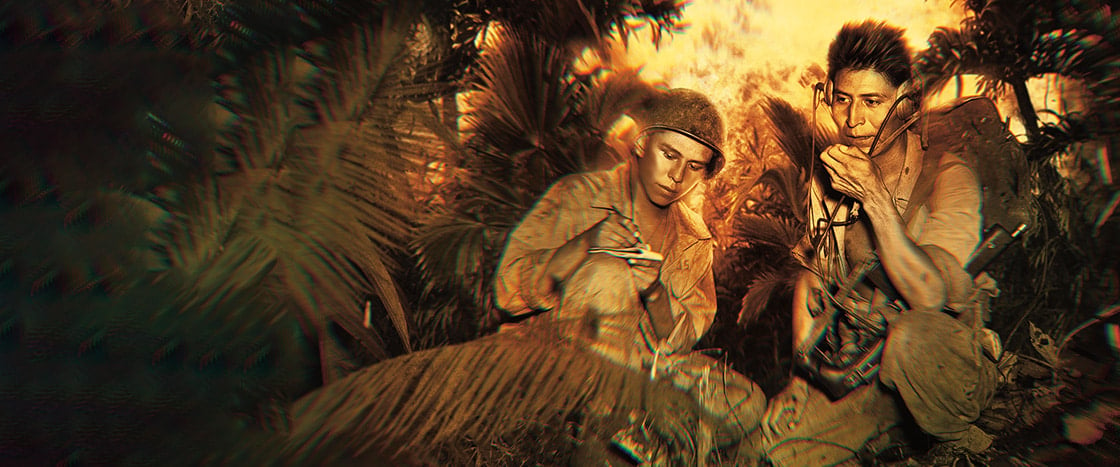U.S. Marine Corps photo by Brian Leddy
Chester Nez
Chester Nez, 21, was crouched in a muddy hole with his buddy Roy Begay. Bullets whizzed over their heads. Bombs crashed around them.
It was almost midnight on November 4, 1942. World War II—the biggest conflict in history—was raging around the globe. The two men had just arrived on Guadalcanal (gwah-duhl-cuh-NAL), an island in the Pacific Ocean. For months, the United States had been battling Japan for control of the island.
Nez and Begay were U.S. Marines. They were also members of the Navajo Nation, a Native people from the U.S. Southwest. Their job on Guadalcanal was top secret. Months before, they had helped invent a code using Diné (dee-NEH), their Native language, so American troops could secretly communicate with each other.
If their code worked, Nez and Begay could do more than help their fellow Marines take the island. They could help win the war.
That night on Guadalcanal, Nez huddled beside Begay. Heavy rain poured down in thick sheets, filling the hole where they were hiding nearly to their chests. Nez had never been more terrified. He tried to stay focused, though. He and Begay had a job to do.
But first, they would have to survive the night.
Chester Nez, 21, was crouched in a muddy hole. He was with his buddy Roy Begay. Bullets whizzed over their heads. Bombs crashed around them.
It was almost midnight on November 4, 1942. World War II was being fought around the globe. The two men had just arrived on an island in the Pacific Ocean. For months, the United States had been fighting Japan for control of the island.
Nez and Begay were U.S. Marines. They were also members of the Navajo Nation, a Native people from the U.S. Southwest. Their job on the island, called Guadalcanal (gwah-duhl-cuh-NAL) was top secret. Months before, they had helped invent a code using their Native language, Diné (dee-NEH). The code would let American troops share messages with each other in secret.
If their code worked, Nez and Begay could help the U.S. win the war.
That night, heavy rain poured down in thick sheets. It filled the hole where Nez and Begay were hiding nearly to their chests. Nez had never been more scared. He tried to stay focused, though. He and Begay had a job to do.
But first, they would have to survive the night.

